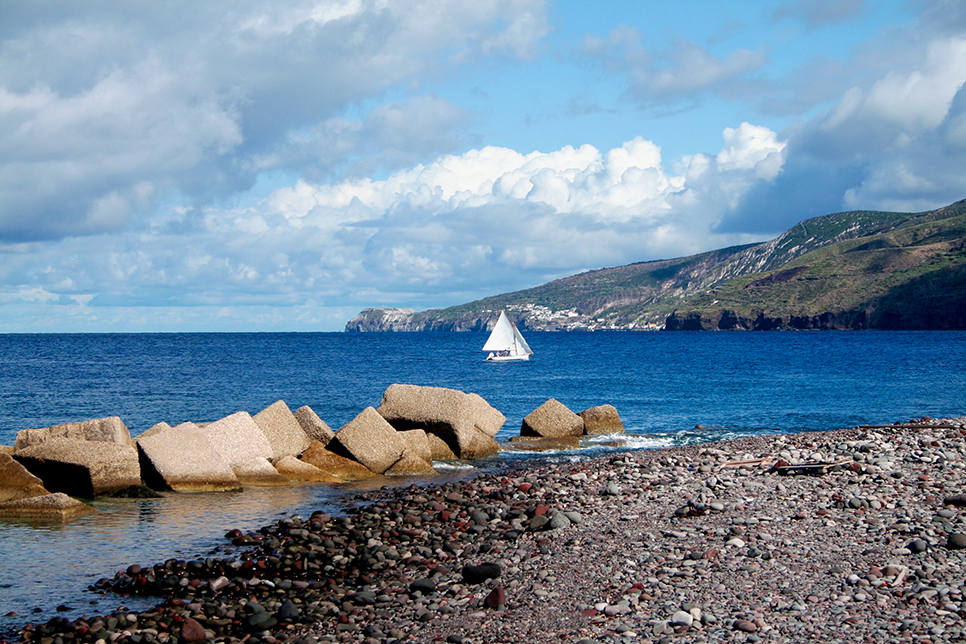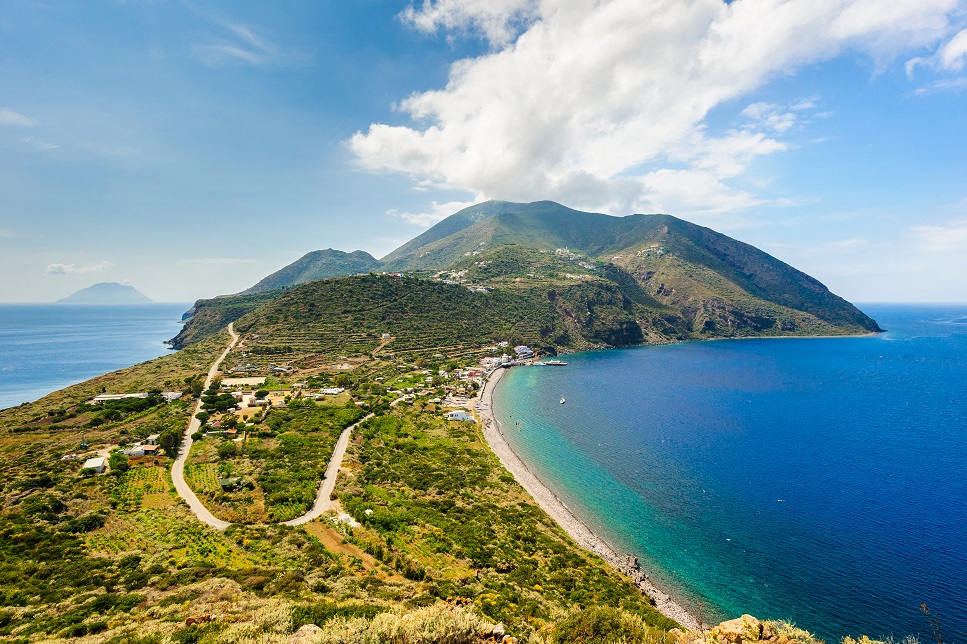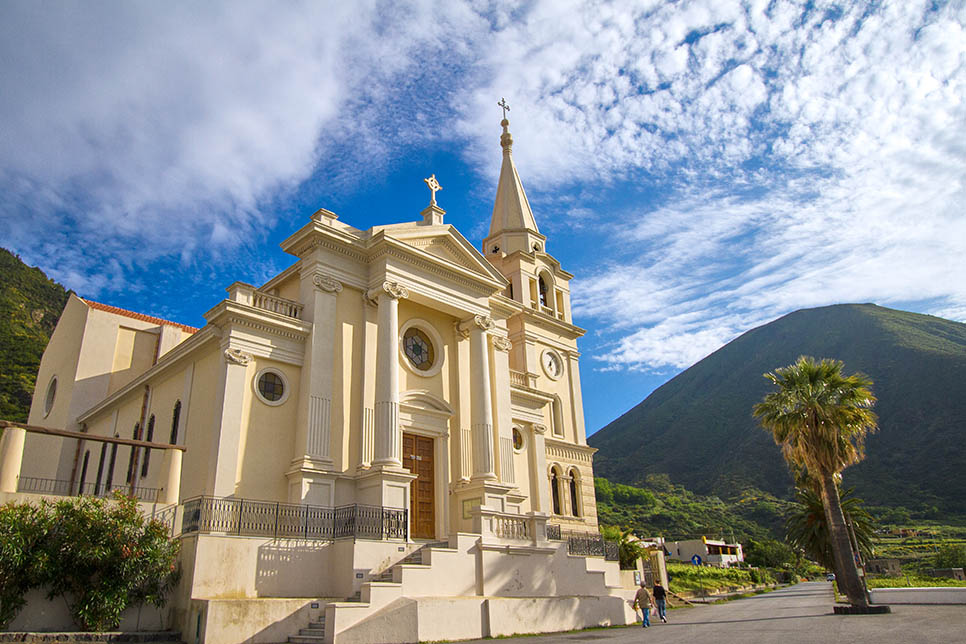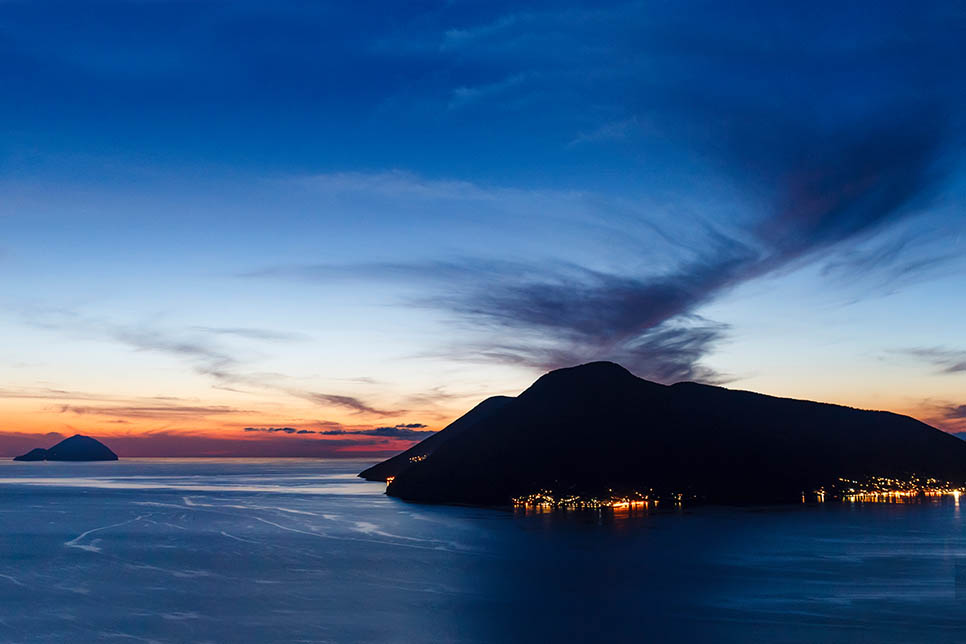Second largest of the Aeolian Islands, Salina is the lush, green one that remains refreshingly untouched by tourism. While the other islands have a largely volcanic landscape, Salina’s is one of woodland, terraced vineyards and gorse-carpeted hillsides. The island’s intensely fertile soil, thanks to the winning combination of volcanic soil and natural freshwater springs, is responsible for the famous Malvasia wine and world-renowned capers.
Equally famous are Da Alfredo, a waterfront café in Lingua which has been producing fruit-packed granitas since 1968, and the stunning views of the Bay of Pollara which found itself with a starring role in the film Il Postino.
Geographically, the island has two extinct volcanic cones (Fossa delle Felci at 962m and Porri at 860m), hence its Greek name of Didyme which means ‘twins’ – while the present name of Salina derives from the ‘saline’ (salt works) of Lingua. Between the two main volcanoes, the Santuario Della Madonna Del Terzito, situated on the track that leads to the top of the mountain, is an important site of pilgrimage. There are several good hiking trails on the island, including those on the Fossa delle Felci. Beaches on the island are rocky rather than sandy and generally very quiet.
Historical information on the island is available in two tiny museums, the Museum of Emigration in Malfa and the Ethnographic Museum in Lingua.
There are three small towns and several villages, all connected by public transport, although the island is possibly best explored by scooter, along roads that lead through tiny villages such as Malfa which tumbles down a hill to a small pebbly cove. The main town is the port town of Santa Marina Salina which has a traffic-free main street, with an assortment of boutiques and food shops.
Salina
made up of two volcanic cones




